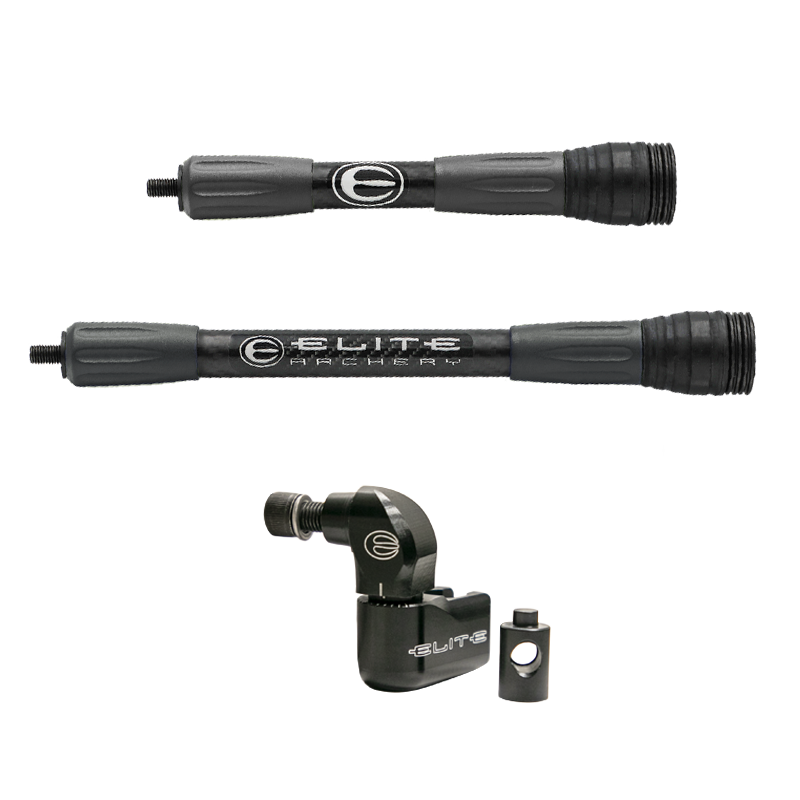Master Your Objective with High-Quality Bow Stabilizers: Shop Now!
Maximize Your Archery Precision With These Bow Stabilizer Techniques
In the realm of archery, achieving optimal accuracy is a quest that demands careful focus to information and method. One important aspect that can significantly impact your performance is the proper usage of bow stabilizers. These often-overlooked accessories hold the potential to raise your shooting efficiency to new heights, however only if used correctly. By exploring the nuanced techniques of picking, mounting, and fine-tuning bow stabilizers, archers can unlock a realm of accuracy that might have formerly avoided them. Whether you are a seasoned archer wanting to fine-tune your abilities or a newcomer excited to boost your precision, understanding these bow stabilizer techniques might be the key to hitting your mark with unparalleled consistency.
Advantages of Utilizing Bow Stabilizers
Making use of bow stabilizers can considerably improve an archer's precision and total performance by reducing bow torque and vibration. Furthermore, bow stabilizers dampen vibration, which not only improves the convenience of capturing but additionally avoids the bow from jumping upon release, therefore helping in maintaining proper aim.
Moreover, bow stabilizers can aid in holding the bow steady, especially during windy conditions or when shooting from longer distances. The added weight at the front of the bow provides stability and balance, allowing the archer to concentrate on intending without the distraction of bow movement. In general, the benefits of using bow stabilizers extend past simply precision, enhancing the archer's experience and performance in different shooting scenarios.
Choosing the Right Bow Stabilizer
Selecting the appropriate bow stabilizer is essential for optimizing your archery equipment and enhancing shooting performance. When choosing a bow stabilizer, there are numerous aspects to think about to ensure you locate the ideal fit for your needs. To start with, think about the weight of the stabilizer. Heavier stabilizers can aid lower bow torque and take in more resonance, causing a steadier goal. Lighter stabilizers offer even more maneuverability, which can be beneficial in particular shooting circumstances.

Last but not least, think about the design of the stabilizer. Some stabilizers feature adjustable weights or dampeners that permit you to customize the equilibrium and feeling of your bow. Inevitably, selecting the appropriate bow stabilizer includes finding an equilibrium between weight, layout, size, and material to boost your shooting precision and overall efficiency.
Proper Installation Methods
To guarantee optimal efficiency and safety in archery, mastering appropriate installation strategies for your bow stabilizer is necessary. The initial step in mounting a bow stabilizer is to identify the correct placement on your bow. The majority of stabilizers are connected to the front of the riser, listed below the grip, to assist counterbalance the weight of accessories such as quivers and views. Make sure that the stabilizer is not interfering with other components or impeding your shooting type.
Next, firmly attach the stabilizer to the bow using the ideal placing hardware. It is important to tighten up the stabilizer snugly to avoid any type of tottering throughout shots. Some stabilizers feature flexible weights that can be included or eliminated to make improvements the equilibrium of your bow. Trying out different weight configurations to find the ideal equilibrium that matches your capturing design.

Readjusting Stabilizer Weight and Length
After making certain the proper installation of your bow stabilizer, the next step includes readjusting the weight and size to maximize its performance in enhancing archery accuracy. The weight of the stabilizer plays a vital duty in minimizing bow movement during the shot cycle.
When it involves stabilizer size, finding the best balance is crucial. A longer stabilizer can provide greater stability by enhancing the range in between the bow and the weight at the end of the stabilizer. This included range boosts the stabilizing impact, especially in windy problems or when contending longer ranges. Alternatively, a much shorter stabilizer uses a lot more ability to move and may be chosen by archers who value agility and fast activities throughout shooting.
Advanced Stabilizer Tuning Tips
Achieving optimum bow stability investigate this site and precision in archery requires a nuanced technique to advanced stabilizer adjusting. Advanced stabilizer tuning involves fine-tuning numerous elements to enhance the bow's equilibrium, decrease resonance, and enhance overall precision. One essential strategy is to explore different stabilizer arrangements, including side-bar and back-bar arrangements, to find the ideal equilibrium between security and maneuverability for your capturing go to these guys design. bow stabilizer. Furthermore, adjusting the angle and positioning of the stabilizer can have a considerable effect on just how the bow reacts upon launch.
Another critical element of innovative stabilizer tuning is enhancing the damping residential properties of the stabilizer system. This can be achieved by integrating added moistening devices such as rubber dampeners or harmonic stabilizers to better minimize resonance and noise. Moreover, exploring various materials for the stabilizer building and construction, such as carbon fiber or aluminum, can likewise affect the bow's efficiency by altering its weight circulation and stiffness. By meticulously adjust these innovative stabilizer components, archers can optimize their accuracy and consistency on the variety or in competitors.
Conclusion
In verdict, maximizing archery precision can be achieved via the appropriate option, installation, and adjustment of bow stabilizers. On the whole, incorporating bow stabilizers right into archery practice can lead to enhanced performance and boosted precision.
Utilizing bow stabilizers can significantly improve an archer's accuracy and general efficiency by minimizing bow torque and resonance. Longer stabilizers provide higher security and balance, particularly for long-distance capturing, while shorter stabilizers supply more convenience and are much easier to steer in tight spaces (bow stabilizer). Carbon fiber stabilizers are light-weight and durable, while light weight aluminum stabilizers are robust and supply outstanding vibration wetting
A longer stabilizer can provide higher stability by raising the distance between the bow and the weight at the end of the stabilizer.An additional essential facet over at this website of advanced stabilizer tuning is maximizing the damping residential properties of the stabilizer system.